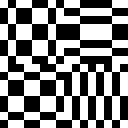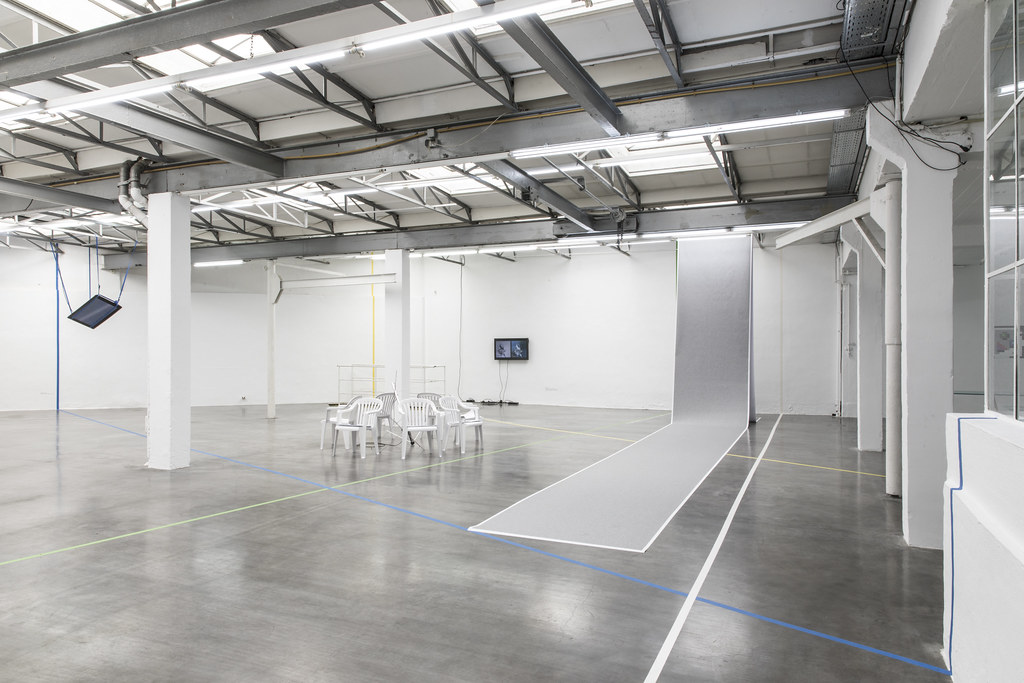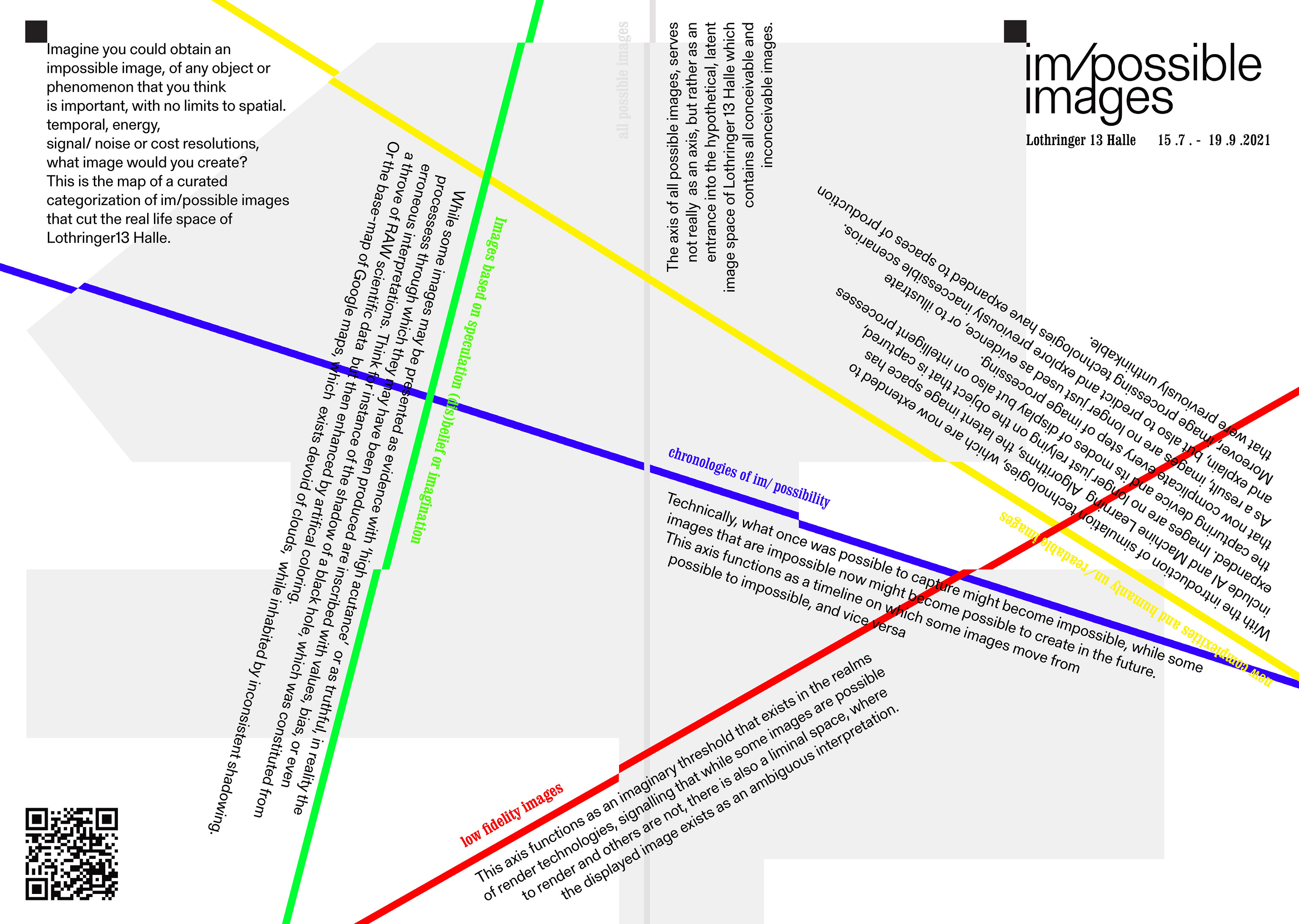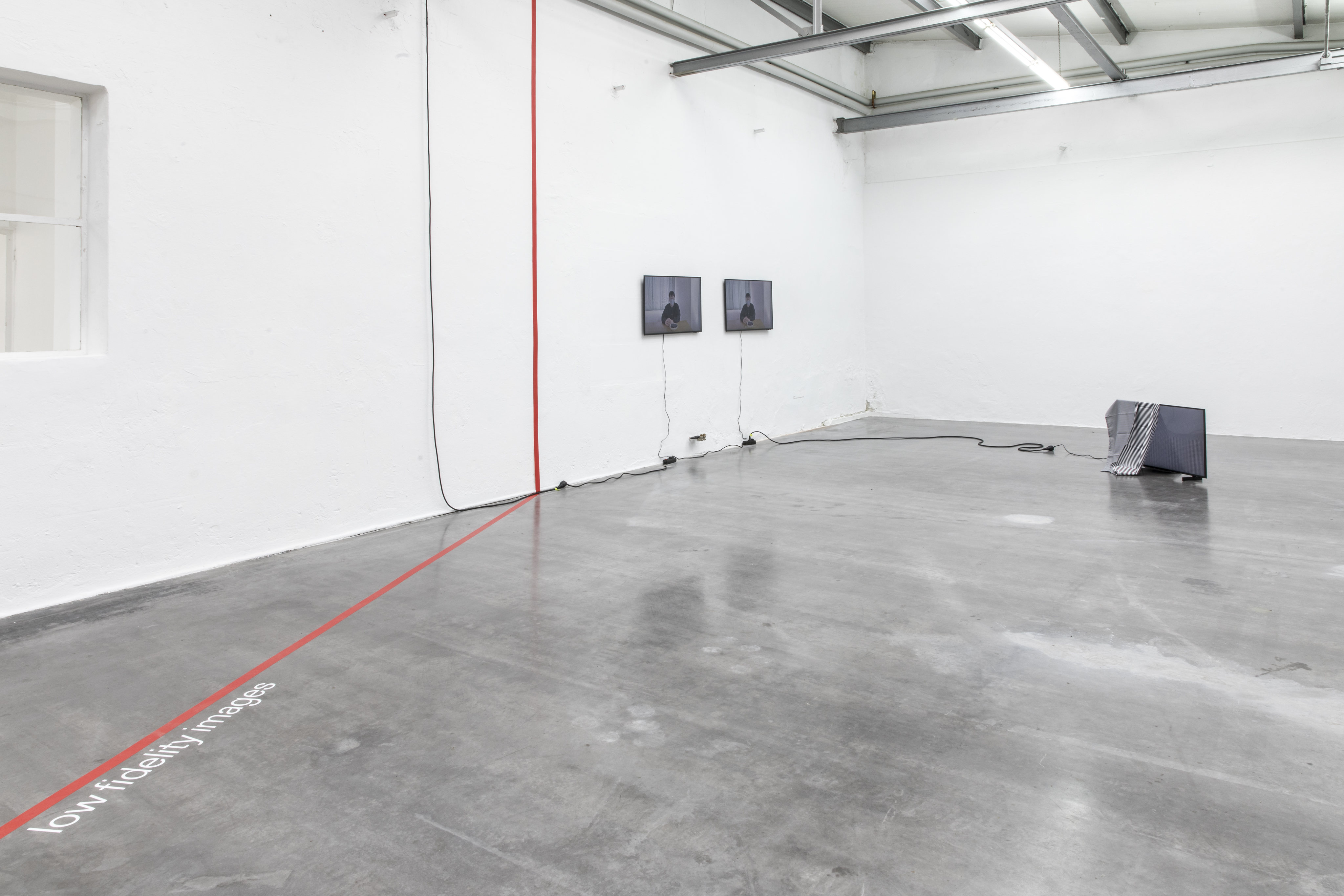

0000 im/possible Images now on @Lothringer_13, in Munich
im/possible images opened on the 15th of July at the Lothringer Halle 13 in Munich and will be open for 2 more weeks. This weekend I will be in Munich to give a talk (if I ever get there, cause right now it looks like we are pretty stuck on this train).
im/possible images is conceptualized and curated by me, and produced by Luzi Gross, to whom I am very grateful for all her hard work and dedication. 💎 💎
🔹 My chipmunk-style video walkthrough click here.
🔹 Photos from the install here.
Background to the show
At the entrance of the Lothringer, a computer provides access to the digital version of the exhibition, titled: the BLOB of im/possibe images. The BLOB is home to a virtual collection of im/possible images that I sourced during my Arts at CERN/Collide-Barcelona residency, by asking every scientist the same question:
Imagine you could obtain an 'impossible' image of any object or phenomenon that you think is important, with no limits on spatial, temporal, energy, signal/noise or cost resolutions. What image would you create?
I developed the BLOB to function as a virtual home for my collection of im/possible images during the pandemic, when all galleries were closed. But now, at the Lothringer 13, the im/possible images exhibition has become a real space actualisation of the virtual BLOB.
The im/possible images exhibition uses the term ‘latent image space,’ as an expanded concept.
In analogue photography, the latent image space exists when photosensitive material has been exposed, but has not gone through the process of development (yet). It is the space that has been touched by light, but that is not showing trace evidence (in the form of an image) yet.
The im/possible images show uses the latent image term as a hypothetical space, that involves every imaginable and unimaginable image that could ever be rendered. A main premise of im/possible images is that once a render parameter is chosen, this parameter acts as a metaphoric cut through the space of the latent image, dividing it up into images that remain possible, and images that have become impossible. So effectively, every render setting realizes particular images, while it compromises others.
In the Lothringer these parameters or axes, are materialized as architectural elements that quite literally cut through the space while introducing five categories of im/possiblity.
DOCUMENTATION
🔹 My chipmunk-style video walkthrough click here
🔹 Artforum review here
[ white axis ] all possible images
works:
︎Fabian Heller, All possible images [True Color, Full HD], Print on PVC, 18x2 metres, 2021.
The white axis, the axis of all possible images, starts outside the gallery and serves as the entrance into the hypothetical latent image space of Lothringer 13 Halle. The axis features two works; the BLOB of im/possible images and All Possible Images [True Color, Full HD] (2021). The latter, All Possible Images, is an entirely new, commissioned work by Fabian Heller. In All Possible Images, Heller explores the absolute maximal, finite number of possible renders an HD computer screen can display. Given enough time (and screens to render on), any sequence of pixels - or ways to fill up an HD display - will eventually occur somewhere at some moment in the world. However, the number of images that a FullHD screen can render is immense. It stretches beyond understanding at a human scale - and ushers in a scenario reminiscent of Borges’ Total Library and Émile Borels infinite monkey theorem. In an essay in the im/possible images reader Heller therefore concludes that All Possible Images comes with its own impossibilities.
works:
︎Rosa Menkman, BLOB of Im/Possible Images, 3D word, 2021.
The white axis, the axis of all possible images, starts outside the gallery and serves as the entrance into the hypothetical latent image space of Lothringer 13 Halle. The axis features two works; the BLOB of im/possible images and All Possible Images [True Color, Full HD] (2021). The latter, All Possible Images, is an entirely new, commissioned work by Fabian Heller. In All Possible Images, Heller explores the absolute maximal, finite number of possible renders an HD computer screen can display. Given enough time (and screens to render on), any sequence of pixels - or ways to fill up an HD display - will eventually occur somewhere at some moment in the world. However, the number of images that a FullHD screen can render is immense. It stretches beyond understanding at a human scale - and ushers in a scenario reminiscent of Borges’ Total Library and Émile Borels infinite monkey theorem. In an essay in the im/possible images reader Heller therefore concludes that All Possible Images comes with its own impossibilities.
[ red axis ] low fidelity images
works:
︎UCNV, Supercritical, Video installation, 2019.
︎Peter Edwards, Nova Drone, Interactive installation, 2012.
30 meters onwards, the white axis intersects with a red axis named the axis of low fidelity images. This red axis functions as an abstract threshold that exists in the realms of digital rendering technologies, beyond the simple binaries otherwise used to understand whether an image can or can not be rendered and features works by UCNV and Peter Edwards.
Images can be amalgamated rather than consolidated. This means that while image data might be static, the final image render is entirely dependent on the discrete steps of the (lofi) image render pipeline. The works exhibited along this red axis illustrate this. They are examples of images existing as non-static formations, or objects of ambiguous technical interpretation, that explore how technological affordances relate to medium specificity, limitation and erroneous consolidation. For instance, Edwards audio visual synthesizer, the Nova Drone, centers around a LED pulsating at high frequency, translated as image-information by the CCD chip (light capturing chip) that exists in most cell phones. Due to the mis-match in frequency between the light pulse of the LED in the Nova Drone and the speed at which the chip of the phone camera collects and writes away the light, a questionable interpretation appears in the memory - the photo roll - of the phone. Whereas Edwards shows how a mismatch in time resolution by our devices can resolve into beautiful, but erroneous, representations, UCNV illustrates how mechanics play out at the level of pixel resolution. His work Supercritical, also represented in an essay in this reader, demonstrates how changes in quantitative pixel resolution result in ambiguous, fluid data morphing. A mechanism that is taken one step further in Daniel Temkin’s contribution to this reader, a how-to guide titled “Unprintables”, which is a manual for creative quantitative pixel resolution mis-use.
works:
︎UCNV, Supercritical, Video installation, 2019.
︎Peter Edwards, Nova Drone, Interactive installation, 2012.
30 meters onwards, the white axis intersects with a red axis named the axis of low fidelity images. This red axis functions as an abstract threshold that exists in the realms of digital rendering technologies, beyond the simple binaries otherwise used to understand whether an image can or can not be rendered and features works by UCNV and Peter Edwards.
Images can be amalgamated rather than consolidated. This means that while image data might be static, the final image render is entirely dependent on the discrete steps of the (lofi) image render pipeline. The works exhibited along this red axis illustrate this. They are examples of images existing as non-static formations, or objects of ambiguous technical interpretation, that explore how technological affordances relate to medium specificity, limitation and erroneous consolidation. For instance, Edwards audio visual synthesizer, the Nova Drone, centers around a LED pulsating at high frequency, translated as image-information by the CCD chip (light capturing chip) that exists in most cell phones. Due to the mis-match in frequency between the light pulse of the LED in the Nova Drone and the speed at which the chip of the phone camera collects and writes away the light, a questionable interpretation appears in the memory - the photo roll - of the phone. Whereas Edwards shows how a mismatch in time resolution by our devices can resolve into beautiful, but erroneous, representations, UCNV illustrates how mechanics play out at the level of pixel resolution. His work Supercritical, also represented in an essay in this reader, demonstrates how changes in quantitative pixel resolution result in ambiguous, fluid data morphing. A mechanism that is taken one step further in Daniel Temkin’s contribution to this reader, a how-to guide titled “Unprintables”, which is a manual for creative quantitative pixel resolution mis-use.
[ green axis ] images based on speculation, dis/belief or imagination
works:
︎Susan Schuppli, Can the sun lie? Video, 2014–2015
︎Sasha Engelmann & Sophie Dyer, Open Weather, Installation & Workshop, 2020-2021
︎Rosa Menkman, Whiteout, video (15 min.), 2020
︎Quote by Ingrid Burrington "forever noon on a cloudless day"
︎NASA basemap of Earth.
A green axis titled images based on speculation, dis/belief or imagination runs almost perpendicular to the red axis. The works installed along this axis show the complex dynamic in images that are presented as evidentiary, truthful or scientific. They illustrate that all processes of image sourcing inevitably inscribe them with values, bias or even faulty interpretations.
One evocative example in the exhibition is the basemap of planet Earth. A map completely devoid of clouds, inhabited by inconsistent shadowing and a blanketing noon time zone - or as Ingrid Burrington rightfully states: on the basemap of planet Earth, it is “forever noon on a cloudless day.” In this reader there are three texts accompanying the green axis. First, a reprint of Susan Schuppli’s formidable essay Can the Sun Lie (2014-2015), in which she shares a striking account of how a system of belief can thwart scientific inquiry. Secondly, the manual for the open weather workshop that was used during the im/possible summer school at the Lothringer. With the help of this manual, one can listen to the NOAA satellites and decode their radio transmission to create a local weather report that goes beyond values of precipitation and temperature, but highlights under-represented values like smog, light or other environmental conditions (of pollution). The axis concludes with “Whiteout”, in which I tell the story of an exhausting mountain hike during a snowstorm and the experience of the loss of my physical sensations - leading to an inability to see, hear, or orient myself. While the spatial dimensions are at first seemingly wiped out, an experience of oversaturation starts to offer the environment to me in new, different imagery ways.
works:
︎Susan Schuppli, Can the sun lie? Video, 2014–2015
︎Sasha Engelmann & Sophie Dyer, Open Weather, Installation & Workshop, 2020-2021
︎Rosa Menkman, Whiteout, video (15 min.), 2020
︎Quote by Ingrid Burrington "forever noon on a cloudless day"
︎NASA basemap of Earth.
A green axis titled images based on speculation, dis/belief or imagination runs almost perpendicular to the red axis. The works installed along this axis show the complex dynamic in images that are presented as evidentiary, truthful or scientific. They illustrate that all processes of image sourcing inevitably inscribe them with values, bias or even faulty interpretations.
One evocative example in the exhibition is the basemap of planet Earth. A map completely devoid of clouds, inhabited by inconsistent shadowing and a blanketing noon time zone - or as Ingrid Burrington rightfully states: on the basemap of planet Earth, it is “forever noon on a cloudless day.” In this reader there are three texts accompanying the green axis. First, a reprint of Susan Schuppli’s formidable essay Can the Sun Lie (2014-2015), in which she shares a striking account of how a system of belief can thwart scientific inquiry. Secondly, the manual for the open weather workshop that was used during the im/possible summer school at the Lothringer. With the help of this manual, one can listen to the NOAA satellites and decode their radio transmission to create a local weather report that goes beyond values of precipitation and temperature, but highlights under-represented values like smog, light or other environmental conditions (of pollution). The axis concludes with “Whiteout”, in which I tell the story of an exhausting mountain hike during a snowstorm and the experience of the loss of my physical sensations - leading to an inability to see, hear, or orient myself. While the spatial dimensions are at first seemingly wiped out, an experience of oversaturation starts to offer the environment to me in new, different imagery ways.
documentation:
︎Röntgen, Röntgen photo, print, 1896
︎NASA Voyager / Carl Sagan, Pale blue dot, 1990
︎Medipix, spectroscopic X-ray 2018
[ yellow axis ] new complexities and humanly un/readable images
works:
︎Alan Warburton, RGB FAQ, Video essay (27:38 min), 2020
︎Memo Akten, Learning to See: Gloomy Sunday, HD Video (3:02 min), 2017
︎Rosa Menkman, Shredded Hologram Rose (4:30 min) 2021
Finally, the yellow axis presents new complexities and humanly un/readable images. This axis focuses on new layers of image processing, added since the advent of AI image generation. During the exhibition in the Lothringer Alan Warburtons video essay RGBFAQ, of which the text is reproduced in this reader, was seen in the basement. In RGBFAQ, Warburton asks what the computational image is? Completing the axis are Memo Aktens’ Learning to See (2017) and The Shredded Hologram Rose (Rosa Menkman, 2021).
works:
︎Alan Warburton, RGB FAQ, Video essay (27:38 min), 2020
︎Memo Akten, Learning to See: Gloomy Sunday, HD Video (3:02 min), 2017
︎Rosa Menkman, Shredded Hologram Rose (4:30 min) 2021
Finally, the yellow axis presents new complexities and humanly un/readable images. This axis focuses on new layers of image processing, added since the advent of AI image generation. During the exhibition in the Lothringer Alan Warburtons video essay RGBFAQ, of which the text is reproduced in this reader, was seen in the basement. In RGBFAQ, Warburton asks what the computational image is? Completing the axis are Memo Aktens’ Learning to See (2017) and The Shredded Hologram Rose (Rosa Menkman, 2021).
The Im/Possible Images Reader
I initiated my - still in progress - research on im/possible images with a single question: Imagine you could obtain an 'impossible' image of any object or phenomenon that you think is important, with no limits on spatial, temporal, energy, signal/noise or cost resolutions. What image would you create? (the answer can be a hypothetical image of course!)
The Im/Possible Images Reader represents a moment in my journey to reflect on my progress and constitutes a collection of texts that range from short stories, to image work, manuals, (technical) documentation and essays that I consider to constitute valuable responses to this question. Some of these materials were specifically written for this reader, whereas others have been generously allowed to be reprinted.
The organization of this publication is modular; the chapters can be read independently. Despite this, we chose the order in which we present them for a reason: to provide a consistently additive flow that builds outwards from the five axes of the exhibition.
In conclusion, I would like to stress that after releasing this im /possible images reader, im /possible images will remain an active research platform, which can be visited here:
www.beyondresolution.info/impossible
The Im/Possible Images Reader represents a moment in my journey to reflect on my progress and constitutes a collection of texts that range from short stories, to image work, manuals, (technical) documentation and essays that I consider to constitute valuable responses to this question. Some of these materials were specifically written for this reader, whereas others have been generously allowed to be reprinted.
The organization of this publication is modular; the chapters can be read independently. Despite this, we chose the order in which we present them for a reason: to provide a consistently additive flow that builds outwards from the five axes of the exhibition.
In conclusion, I would like to stress that after releasing this im /possible images reader, im /possible images will remain an active research platform, which can be visited here:
www.beyondresolution.info/impossible
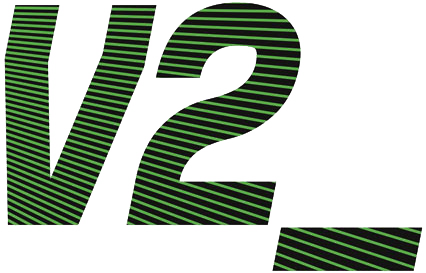 Part of the research for this reader was conducted in the framework of the Alex Adriaansens Residency at V2_Lab for the Unstable Media. Thanks to director Michel van Dartel and curator Florian Weigl.
Part of the research for this reader was conducted in the framework of the Alex Adriaansens Residency at V2_Lab for the Unstable Media. Thanks to director Michel van Dartel and curator Florian Weigl.
0001 open-weather.community at the im/possible summer school
Sophie Dyer and Sasha Engelmann are part of im/possible images with their Impossible Weather Station. An installation that is activated once a week, to tab into a NOAA satellite and read out a local weather report. During the im/possible summer school, the im/possible weather station had its first activation in the form of a workshop. The read out above was done by Anna Pasco, a participant of the workshop.
By Sophie Dyer and Sasha Engelmann:
“The im/possibe weather station is a tactical space for producing counter- images of weather that demonstrate the impossibility of both contemporary weather forecasts and the optics of Google Earth. Once per week, the Impossible Weather Station is activated in order to capture a transmission from a National Oceanic and Atmospheric Administration (NOAA) satellite. For us, the process of capturing this image is more than technical: it involves attending to local meteorological conditions, centring the body in the technical system and sensing the satellite in visible, audible and electromagnetic registers.
Images of weather, from the daily weather radar to smartphone weather applications, present ‘snapshots’ of current weather conditions. These images suggest that weather is uniquely contemporary, it is happening right now. Yet, as Denise Ferreira da Silva reminds us, the very heat in the air is a transformation of the “extensive and intensive extraction of matter from the earth, in the form of fossil fuels, soil nutrients to feed crops and livestock, and the (human and more-than-human) work that sustains capital” over the last several centuries (2018: np). Images of weather are not images of the present; these images inscribe and make visible histories of coloniality, raciality and capitalism."

image "All Possible Landscapes" copyright Jens Schnitzler
0010 HFBK Digitale Grafik at the im/possible summer school
During the im/possible summer school, ten students from HFBK Hamburg took part in a special summer school program; a three-day production sprint in the style of a hackathon, during which they reflected on im/possible images. The image above is of the work All Possible Landscapes by Jens Schnitzler, which was directly inspired by the work All Possible Images by Fabian Heller.
The six student projects that resulted from the im/possible summer school can be found here.
During the im/possible summer school, ten students from HFBK Hamburg took part in a special summer school program; a three-day production sprint in the style of a hackathon, during which they reflected on im/possible images. The image above is of the work All Possible Landscapes by Jens Schnitzler, which was directly inspired by the work All Possible Images by Fabian Heller.
The six student projects that resulted from the im/possible summer school can be found here.

